-
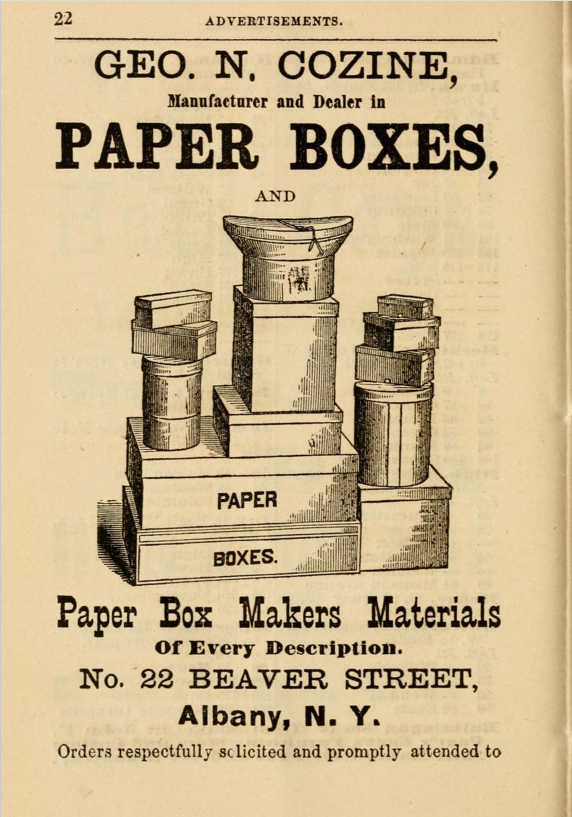
Cozine’s Paper Boxes
•
It used to be that boxes were made locally. Every city of any size had a few box makers. The paper and linerboard and corrugated cardboard that made up boxes were all made at paper mills, either local or distant, but the work that it took to make them into boxes was done right…
-
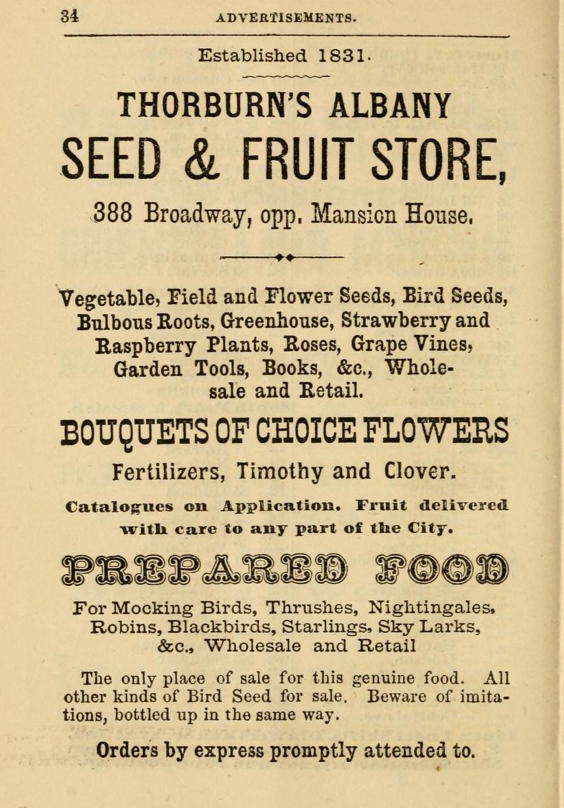
Thorburn’s Seed & Fruit Store
•
By 1869 when this ad ran, Thorburn’s Albany Seed and Fruit Store had been around for 38 years already, delivering fruit with care to any part of the city. They sold seeds and fruits, flowers, fertilizers, garden tools and a surprisingly specific variety of bird seeds. “Beware of imitations, bottled up in the same…
-
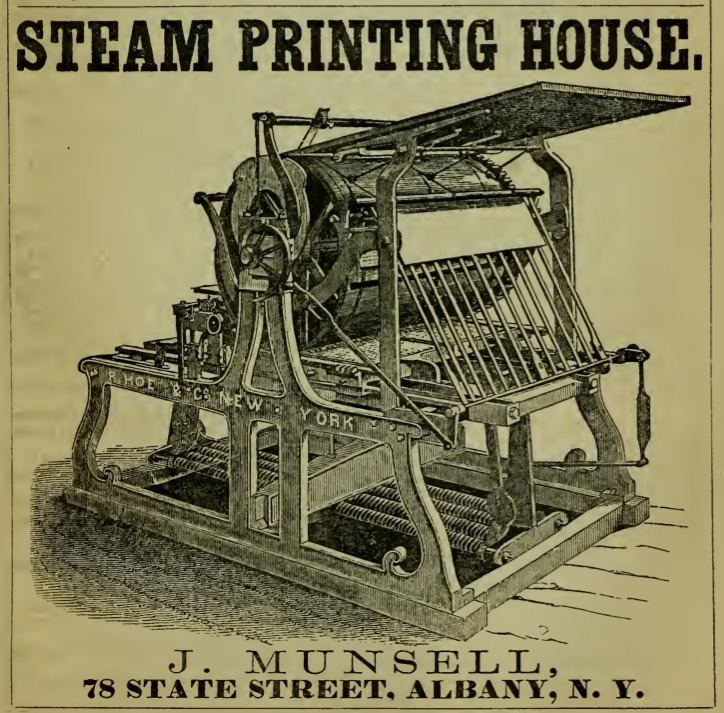
Munsell’s Steam Printing House
•
We’ve written before of the importance of Joel Munsell as one of Albany’s premiere printers, publishers, and historians. So today let’s just admire the beauty of his steam press. This wonderfully detailed illustration appeared in the 1863 Albany city directory, a directory which Munsell, of course, published and printed at his plant at 78…
-
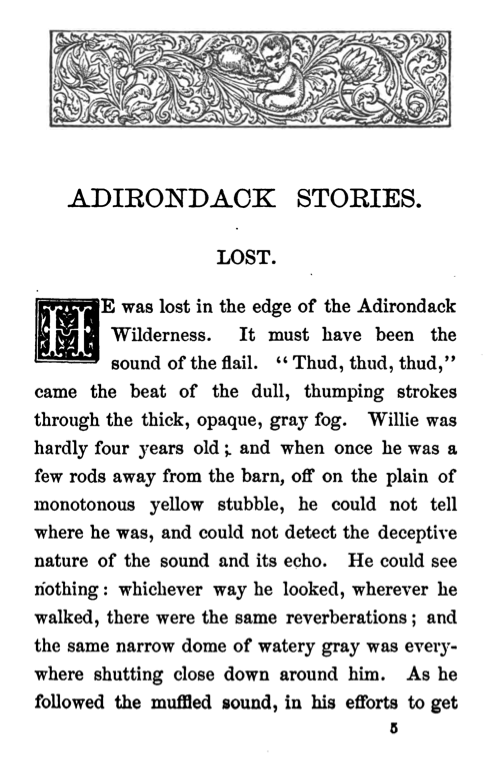
Philander Deming’s Adirondack Stories
•
In addition to creating the entire field of court stenography and trying to invent a noiseless typewriter, Philander Deming was a writer of some renown. He wrote a number of stories involving Adirondack adventures, at a time when the northern wilderness was truly wild and the Adirondacks held a very special place in the…
-
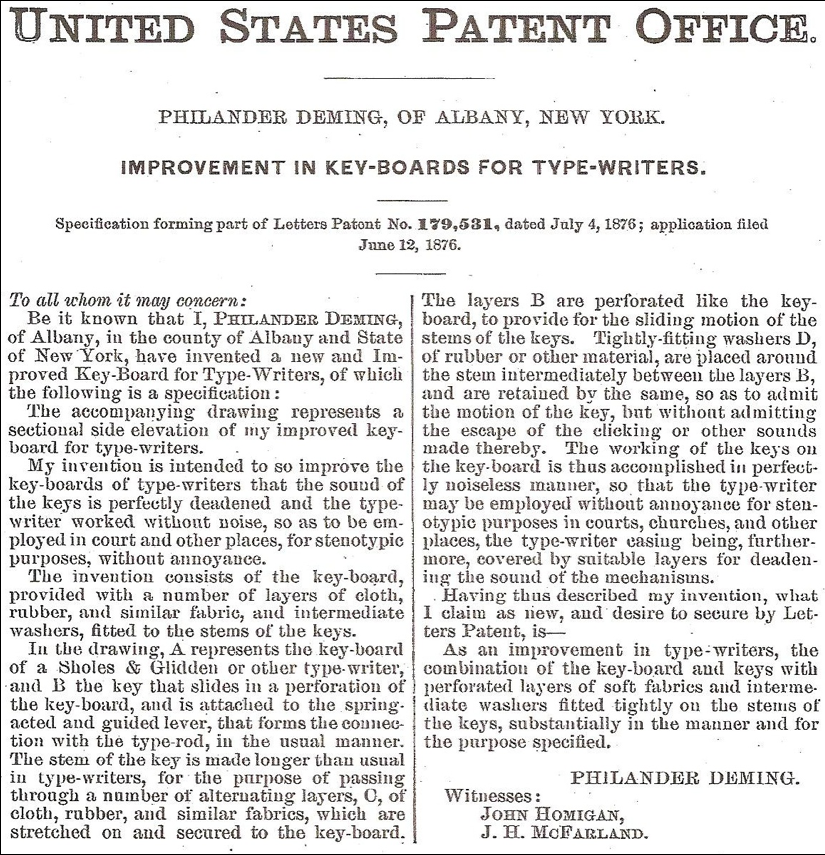
Mr. Deming’s stenographic typewriter
•
No one could say he wasn’t an innovator. In the 1870s, Albany’s Philander Deming, father of court stenography, saw the possibilities arising from the newfangled writing machines known as type-writers. He didn’t invent his own, but set out to improve the Sholes and Glidden machine in order to make it as quiet as possible…
-
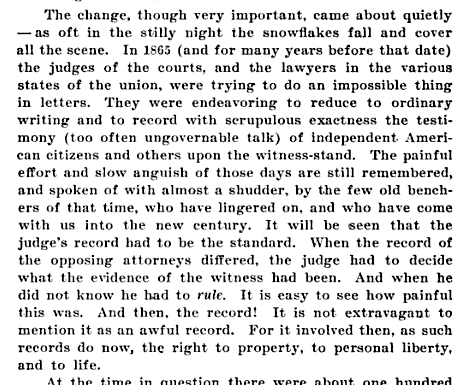
The Thrilling Story of Court Stenography
•
Albany’s Philander Deming told the story of his innovation of court stenography in the third person, referring to himself (in a style of modesty then current, perhaps) as Mr. Gray: “In 1865 … the judges of the courts, and the lawyers in the various states of the union, were trying to do an impossible…
-
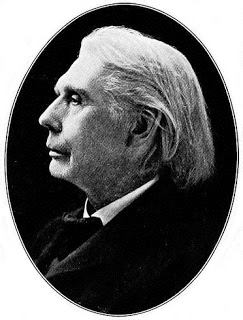
The Father of Court Stenography
•
It’s going to take a few days to tell all that we need to tell of Albany’s Philander Deming. He was an author whose sketches of life in the Adirondacks were widely read and published in magazines like The Atlantic Monthly. He took credit for introducing stenographic recording to court proceedings, where previously the…
-
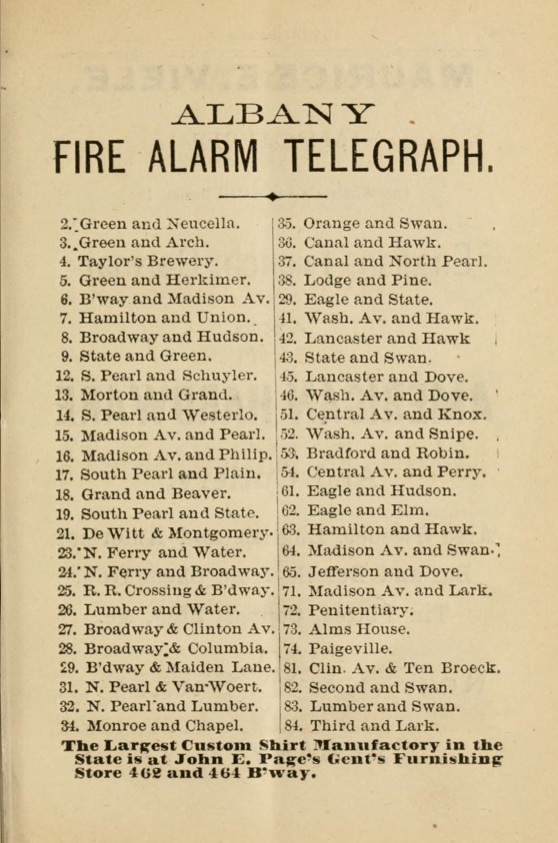
The Albany Fire Alarm Telegraph
•
In 1868, Albany put in place a system of fire alarm telegraphs, by which a signal could be sent to a central location to alert the fire department. Prior to that, church and school bells were used to raise the alarm. The Central Fire Alarm Station was at the City Building at the corner…
-
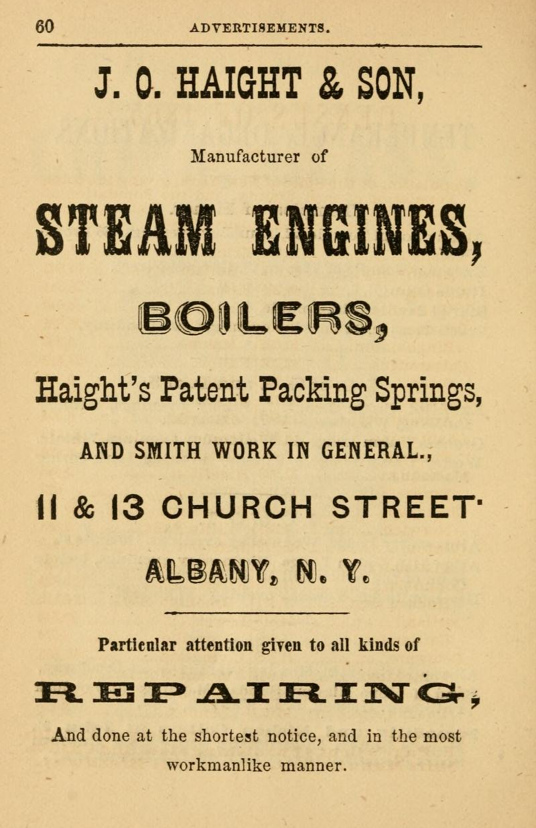
James Haight, manufacturer and inventor
•
In 1869, steam power was the height of modernity. And in order to power something with steam, you needed a steam engine or boiler. James O. Haight of Albany was one of a number of area makers of engines and boilers; he even held a patent for a steam piston and a packing spring,…
-

Blasie’s Superior Instantaneous Hair Dye
•
Those wishing to wash the gray away in 1869 might have turned to Blasie’s Superior Instantaneous Hair Dye, available in black or brown and positively the best in use. It was a two part process (but the first part could be applied without having to wash your hair or whiskers!). It was sold by…
